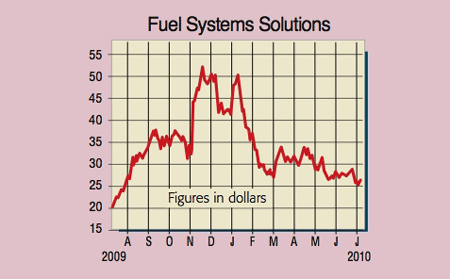
Liquid petroleum gas (LPG) is cheaper, more abundant and more environmentally friendly than petrol. So why aren’t we all using it already?
The first setback is that we need more LPG filling stations (currently it is offered at only around 10% of them in the UK). Refitting more forecourts with the necessary technology will only happen once more consumers want LPG, but given that a motorist doing 10,000 miles a year could save up to £5,000, this is only a matter of time.
Another big barrier is the cost of converting cars to ‘dual fuel’ (so they can run on both petrol and LPG). The good news is that this is falling – the payback period is now typically between six and 18 months.
The EU has mandated that 20% of all cars should be fitted with gas alternatives by 2020. Indeed, western countries have committed to slashing carbon emissions by 50% by 2050. Large emerging economies such as China have until 2070. Achieving these ambitious targets has to mean more natural gas vehicles (NGVs). Little wonder the sector has expanded at a 30% clip over the past decade. The World LPG Association estimates that there are 24 million NGVs on our roads, 2.9% of the global total.
Until now, the home of the car, the United States, has been way behind the curve. It has only 110,000 NGVs out of a national total of 255 million vehicles. This is beginning to change, however. Barack Obama is currently pressing ahead with much stricter environmental standards for cars as he seeks to allay fears about energy security. He has proposed radical new legislation that could double the federal tax credits available for NGVs if voted through by Congress. As a result, big auto-makers are starting to offer LPG alternatives to their most common models.
Fuel System Solutions (Nasdaq: FSYS), rated a BUY by Lazard Brothers
This is where Fuel System Solutions steps in. It is the grand-daddy of NGV fuel systems, selling its proprietary kit to both the transportation (85% of sales) and industrial (eg, forklift trucks and power generators) sectors. Its tried and tested products control the pressure and flow of LPG, and regulate the proportion of fuel and air used by the engine, thereby improving efficiency, enhancing power and reducing emissions. The firm’s products are bought by most of the big boys, such as Toyota, GM, Citroen, Volvo, Ford, BMW and Jaguar. Indeed, they have been installed in around seven million vehicles, representing a 29% share globally. Although the US accounts for less than 10% of the company’s revenues, the chief executive, Matthew Beale, sees this balance shifting decisively. He thinks the company is well placed to exploit a “mega-trend” as the world’s wealthiest nation converts to NGVs.
Fuel System Solutions is in pretty good financial shape too. Its first-quarter results saw earnings per share leap 260% to $1.44. Turnover rose 100% to $161m. Gross margins widened 9% from 30% to 39%, and the balance sheet boasts a solid net cash position of $56m (about $3 per share).
So why has the stock tanked nearly 50% since January? The exceptional first-quarter results were partly the result of a one-off spike in demand as Italian drivers bought NGVs ahead of the expiry of a lucrative domestic incentive programme. This will not be repeated, so many analysts have downgraded their forecasts. However, I think they could be missing a trick. Irrespective of fiscal subsidies, the environmental and economic benefits of NGVs are just too compelling. And with Wall Street pencilling in 2010 turnover and underlying earnings per share of $440m and $2.30 respectively, I can see the stock rocketing over the next five years. In fact, by 2015 the firm could be delivering revenues and operating profits of $1bn and $150m. Discount back at 12% and apply a ten-times multiple and that generates an intrinsic worth of $47 a share.
What about possible gasket-blowers? Even leaving aside the sickly global economy, the company is exposed to product recalls, counter-party risk (if, say, General Motors went bust), foreign-currency fluctuations, political interference and competing technologies such as fuel cells. Nonetheless, I think the recent declines represent a good buying opportunity. Lazard has a price target of $42. Second-quarter results come out in early August.
Recommendation: BUY at $27
Paul Hill also writes a weekly share-tipping newsletter, Precision Guided Investments. See
www.moneyweek.com/pgi.aspx
or phone 020-7633 3634.